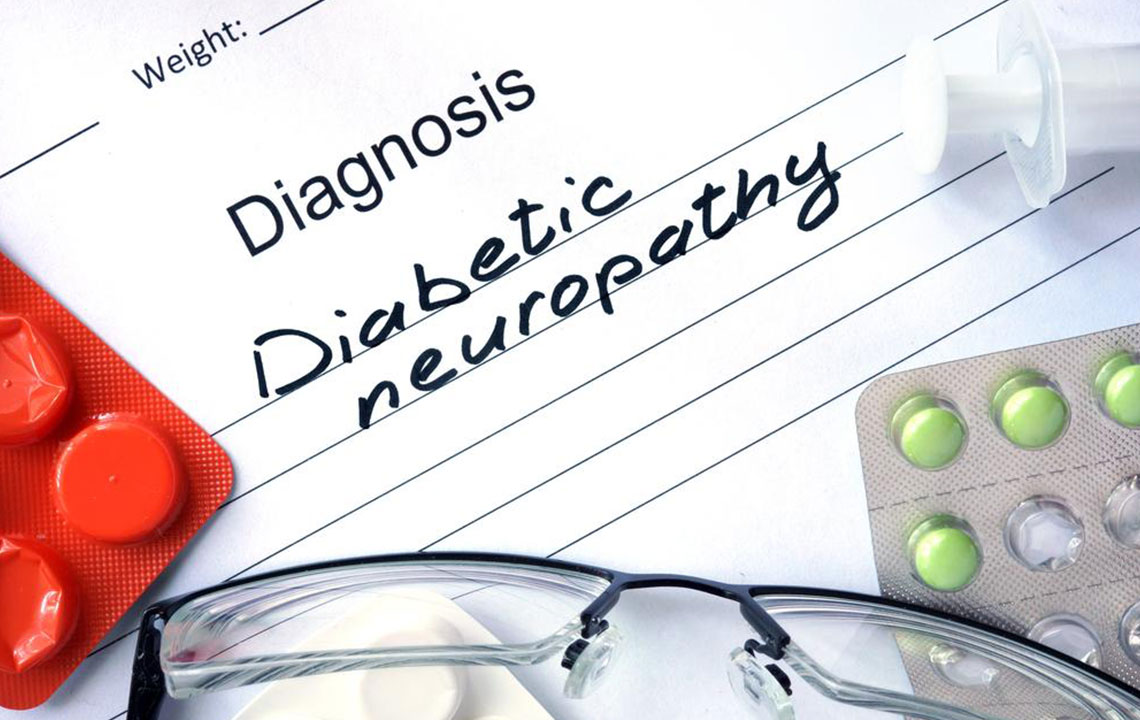Everything You Need to Know about Diabetic Neuropathy

Neuropathy is a nerve damage condition that can be triggered by a number of reasons. Diabetic neuropathy is a condition that results in nerve damage because of diabetes. Diabetes is caused by consistently high blood sugar levels. This results in your body’s ability to process it, release, and utilize insulin, taking a massive hit.
Diabetes also often results in damage to the nerve fibers, especially in your hands and legs.
There are four types of diabetic neuropathy symptoms, each with their own set of unique diabetic neuropathy symptoms. Understanding them will help you better understand the diabetic neuropathy symptoms and how to proceed.
Diabetic neuropathy symptoms & types
Peripheral neuropathy : The first type of diabetic neuropathy symptom called is peripheral neuropathy. This is because it results in pain in your feet and legs first, gradually spreading to your arms and hands.
A person with diabetes tends to experience leg pain from diabetic neuropathy, as the legs are usually the first part of the body to suffer nerve damage. The symptoms of peripheral diabetic neuropathy are:
- A tingling sensation in your feet and legs
- Sudden pain with a rise in blood sugar or blood glucose levels
- More serious foot problems, arising from the inadequate blood supply, blood flow, and the weakening of the muscles.
- However, peripheral neuropathy can be treated with consistent care and attention. If you take gradual steps like moisturizing your legs and keeping them clean and healthy, it may help prevent potential nerve damage. Try to massage your feet regularly, but not vigorously as this could probably damage some affected nerves.
Autonomic neuropathy : Autonomic nerves regulate the body’s survival functions, including your heart rate, blood pressure, your digestive system function, and breathing. Any nerve damage to these essential functions or organs could be because of the damage to the autonomic nervous system. Greater nerve damage can be a major cause for concern, having an impact on blood pressure, breathing and your heart rate. Anything that is harmful to your heart can prove to be life threatening. The symptoms of autonomic neuropathy are:
- Uncontrollable or unexplained vomiting, diarrhea, constipation, and appetite changes
- Sexual dysfunction for women and men, like vaginal dryness in women, and erectile dysfunction in men.
- Trouble with your vision and your eyes’ ability to adapt to sudden changes in light, usually caused by high blood sugar levels
- Autonomic neuropathy can be prevented with the right care. Keep a close watch on your meals and schedule regular consultations with your doctor. Avoid eating food items with high sugar content.
Radiculoplexus neuropathy : Radiculoplexus neuropathy affects the nerves that run through your hips, thighs, and buttocks. It can cause severe pain in all of these regions, and the pain can spread easily. This kind of pain proves to be very uncomfortable for a person in daily routine. The symptoms are:
- Sudden weight loss or swelling of stomach
- Difficulty standing or sitting making
- Weakness in your thighs or cramps in your thighs
- Radiculoplexus neuropathy is a severe nerve damage condition, and you should consult a doctor to ensure you get the right medication and physiotherapy.
Mononeuropathy : Mononeuropathy is damage restricted to one particular nerve. This usually affects the face, torso, or leg. This can cause severe pain but usually no long-term problems. These are the diabetic neuropathy symptoms of mononeuropathy:
- A sense of sudden weakness
- Facial paralysis on one side
- Pain in your chest or abdomen
Explaining your symptoms to your doctor will help analyze the cause and damage, and give you more effective preventive and treatment measures.
The above symptoms of diabetic neuropathy can give a clear picture of the state your health is in. However, it is always better to consult a doctor if you fear nerve damage.
Since nerve damage from diabetic neuropathy is not immediate or overtly clear, unlike injuries from an accident, giving your doctor the exact details about the nature of your pain is important. Research shows that people who have diabetes generally tend to experience pain in different parts of their body, depending on their body type and type of diabetes.
An apt description will not only help him analyze the pain but also pinpoint the cause easier.
If left unattended, diabetic neuropathy can cause other, more serious issues. If your feet and hands are not healthy, it can lead to ulcers and cuts.
If you have diabetes, you should take the effort to build a strong immune system. This helps minimize the internal damage that diabetes can cause to your body.
It is difficult to cure diabetes altogether, so it’s vital to stop the progress of diabetic neuropathy. Basic measures like controlling your blood sugar levels, a healthy diet, regular sleep, and exercise have a positive impact on diabetic neuropathy.


